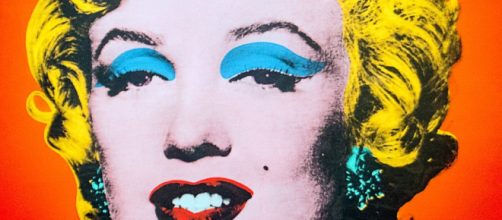Art and money go together like Andy Warhol and celebrity culture. Next month, Christie’s auction house anticipates his portrait of Marilyn Monroe fetching a mega $200 million.
This should surprise no one. The awaited sale price is a historic inevitability. You could see it coming in 2009 when Warhol’s replicas of 200 one-dollar bills sold for a record $43.8 million.
Historic inevitability
Warhol’s work valued higher than Picasso’s was in evidence last year at a Sotheby’s auction. That was when Picasso’s portrait of his muse Marie-Therese Walter sold for $40.5 million – three million less than the sale of Warhol’s replica of dollar bills when sold 22 years ago!
But British art critic Jonathan Jones's reaction to the latest auction news suggests surprise when he exclaimed in The Guardian, “Warhol is now worth more than Picasso,” as if that wasn’t true before now.
‘Media-age marvel’
To Jones’ credit, he asked a question that needs to be asked: “Was Andy Warhol just an ‘affectless hero’ of the media age? Or was he the greatest and most profound artist of his era?”
I vote “media age marvel.” But Jones views Warhol as more than that, calling him “a seer.” Christie’s also touts him, saying his image of Marilyn is “one of the rarest and most transcendent images in existence.”
Naturally, thy auction house would say that. Pitchmen say stuff like that. Shame on Jones for reciting it.
You don’t expect this from England’s leading art critic.
Great expectations
You also don’t expect an art connoisseur to say, “There’s a better Warhol just behind the one we think we know.” Where’s the better Warhol in lifting Marilyn’s face from a publicity still for his portrait?
But wait, Jones says the “better Warhol” is not the $200 million portrait of Marilyn. It’s the one he made just after she died, a diptych showing her in color and in grey to indicate her decline.
“The inner Andy has taken over, and he has more on his mind than fame or money,” Jones said of the diptych. Why? Just because he recognized Marilyn’s death.
Jones goes still further when he says that you can see more than materialism in the Pop artist’s work because his “spirit is everywhere” – even his soup cans.
And for naysayers like me who think that Jones’ praise is excessive (especially when he classes the Pop artist as “the god of modern art”), he suggests looking to Warhol’s The Last Supper series made the year he died.
I looked but didn’t see “spirit.” I see only that his picture is lifted whole from a reproduction of Da Vinci’s painting. I’m not a big fan of Picasso, either, but at least he was original.
Jones conceded that Warhol “could do a very good impression of someone who didn’t give a damn.”
But the bored, blank-television stare that he wore was more than an impression. Warhol made this clear in an exhibit catalog for a show in Stockholm in 1968: "If you want to know all about Andy Warhol, just look at the surface of my paintings . . . There's nothing below it.”


